Closed to General Public
Occasional behind-the-scenes tours are offered at times, see Event Calendar if scheduled
The "McLaughlin Dry Dock"
A Growth Industry
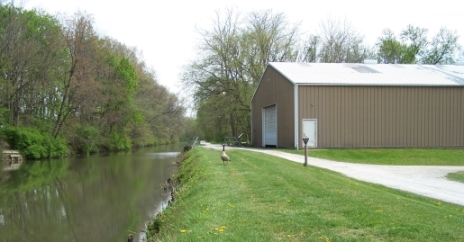
As we have said before, the onset of the canal era brought with it industry as well as commerce to the young state of Ohio (remember by 1832 - the year the canal finally reached Portsmouth - Ohio was only 29 years old). One of the industries that sprang up to service the needs of the growing state was canal boat building. To satisfy the demand for boats, many boat yards and dry docks dotted the banks of the canal and Canal Fulton had one such dock. In 1832 Michael Ruch built and began operating this dry dock.1 Apparently he was pretty successful at the business because in 1845 he built a rather stately home atop his estate on "Pleasant Hill" overlooking the town.2 It was said he could sit on his balcony and with looking glasses oversee work at the dock. This type of dry dock could provide the full service to canalers from maintenance of existing boats to construction of new boats.
Family Business to Local Legacy
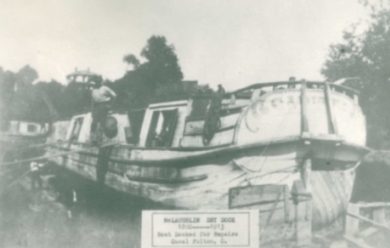
By the 1850's, James McLaughlin (with his family in tow) had moved from Pennsylvania to Independence, OH where he there operated a boat building facility.3 After sometime, the family moved once again and settled here in Canal Fulton where in 1860 James bought Ruch's dry dock business.4 The McLaughlin family would continue operating the facility until the end of the canal era.
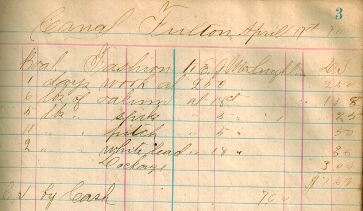
Over the years, the McLaughlins would build or repair
many, many boats. Just as today, boat names held
personal meanings to their owners and many were as
colorful and imaginative as owners could contrive.
The "Cataract," "Scandinavia," "Two Sisters," "Look
Out," and most notably (at least for our purposes) the
"St. Helena" are among the many boats that received
repairs here.5
Though we can't be positive about the
specifics of the occasion, the St. Helena must have
come in for repairs sometime during or after the late 1800's6
and
William McLaughlin (who - taking after his father and
elder brothers - was quite the craftsman) must have
worked on her. Either she left a lasting impression
on him or he just had a really good memory because
years later, in 1933, he built a model - naming it the St.
Helena - which was METICULOUSLY detailed.7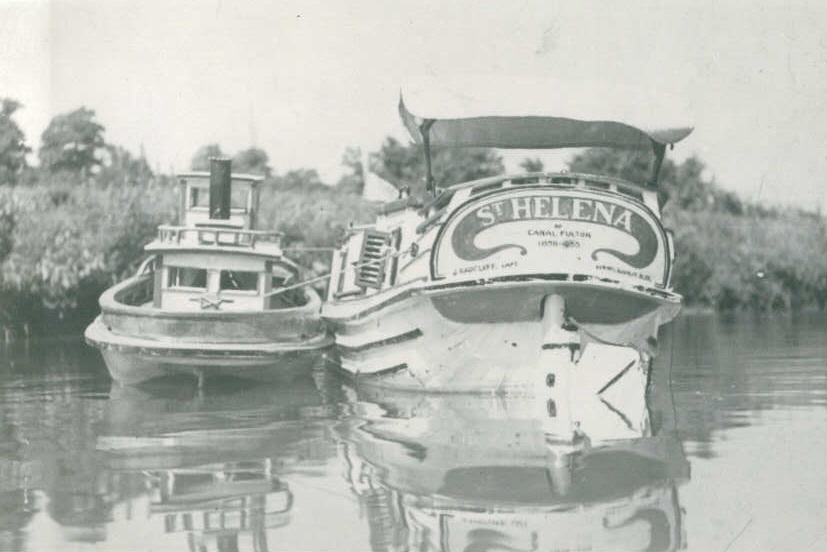
Two generations of McLaughlins would work here before being put out of business by the 1913 flood.
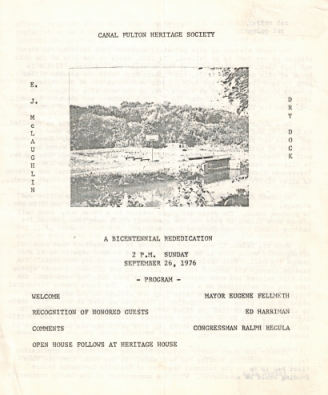
Restoring the Past
In 1971, the Stark County Historical Society leased
this property from the City of Canal Fulton.8
Their intention was to restore the dock into operating
condition
(which they were finally able to accomplish in 1975).
Boat staff knew such a facility would be needed and
the sooner the better. The receipt of boat
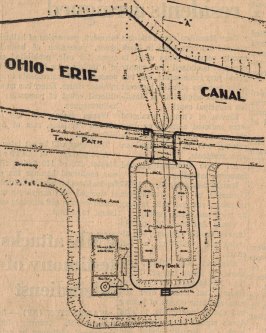 revenues, grants and donations from McLaughlin family
members and others would raise the funds
needed to give the
St. Helena II a dry home during the off-season.9
Over the
years, this restored dock proved an essential part of
boat operations, if only as a place for crew to make
temporary mid-season repairs to the hull until more
thorough work could be undertaken in the off-season.10
revenues, grants and donations from McLaughlin family
members and others would raise the funds
needed to give the
St. Helena II a dry home during the off-season.9
Over the
years, this restored dock proved an essential part of
boat operations, if only as a place for crew to make
temporary mid-season repairs to the hull until more
thorough work could be undertaken in the off-season.10
The dry dock would receive more attention in 1985
when the Heritage Society (which had assumed the
lease from the Stark County Historical Society in
1975) developed plans to further improve upon the
facility. Grants were secured to erect a pole-building
over top of the dock itself. This would prove
important to operations both at the time and in the
very near
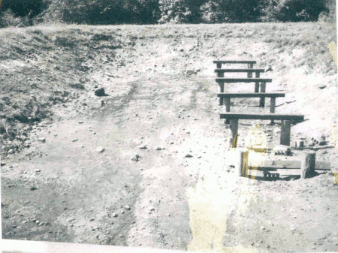 future. It facilitated a better area in which to make
much needed repairs to the St. Helena II and would become
essential in construction of her successor, the
St. Helena III.
Cables suspended from the roof joists would hold the
metal infrastructure in place while the III was
being assembled.11
future. It facilitated a better area in which to make
much needed repairs to the St. Helena II and would become
essential in construction of her successor, the
St. Helena III.
Cables suspended from the roof joists would hold the
metal infrastructure in place while the III was
being assembled.11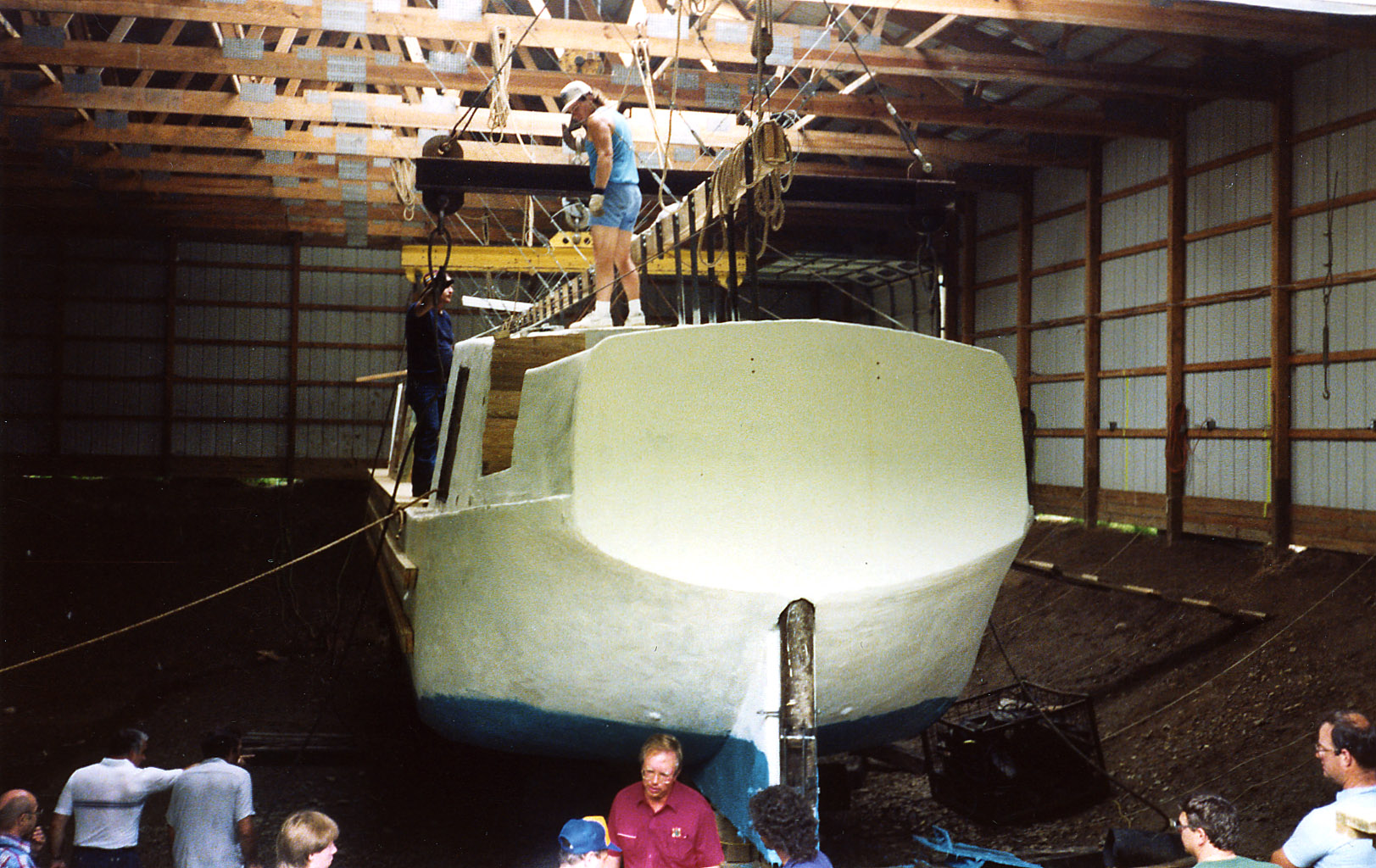 In 1989, the roofed and lighted
work space would be vital for the long days and late
nights during the next 3 years of construction.
In 1989, the roofed and lighted
work space would be vital for the long days and late
nights during the next 3 years of construction.
The McLaughlin Dry Dock Today
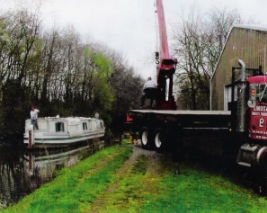
Since it's restoration in 1975, this dock has been the only original operating canal era dry dock in the entire state. In essence, the dock functions the same way it did 150 years ago. A series of gates keeps the dock dry while not in use, then the dock is flooded with water from the canal and the gates are removed allowing boats to enter. Once the boat is situated, the gates are replaced and the water drained out of the dock into the Tuscarawas River, thus giving workers a dry place to access the boat hull.
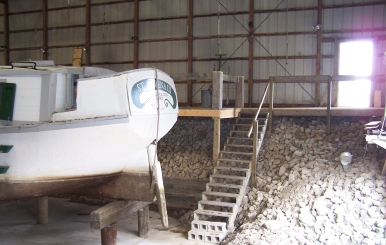
Another series of renovations were accomplished in 2008 which further aided maintenance efforts. Jim Guest, a canal buff and one of the original builders of the St. Helena II, designed a work/observation platform, acquired new lentils,* secured the dock's entry ways and had a cement pad installed beneath the boat. Grant money was awarded from the Canal Society of Ohio for the project and City of Canal Fulton and other volunteer crews were instrumental in accomplishing these tasks.
When so many old buildings and features in our historic city have been lost to fire or other destruction, we indeed count it a blessing that at least in the operation of this facility, our community can glimpse a piece of our canaling past.
Web Page Notes
photo caption, "Old Mill at Lock 4," The Canawler, 1968, Vol.1, No.2.
"McLaughlin Dry Dock," The Canawler, 1971, Vol.4, No.1.
Rose Leaver, "Ruch Estate is Regal Manse," The Canawler, 1975, Vol.7. No.2.
3. James operated a canal boat dry dock in Beaver Falls, Pennsylvania before moving to Ohio.
Terry Woods, Interview with Charles McLaughlin, 12 January 1974, CFHS Collections.
"McLaughlin Dry Dock," The Canawler.
5. Carroll Gantz has supposed that St. Helena could have derived from the Catholic saint or perhaps the British isle named after her.
Carroll Gantz, Buildng the St. Helena II: Rebirth of a Ninteenth-Century Canal Boat, (Kent, Ohio: Kent State University Press, 2012) 56.
6.
We can't say for sure, but perhaps it was this occassion mentioned in the Akron Beacon Journal in 1901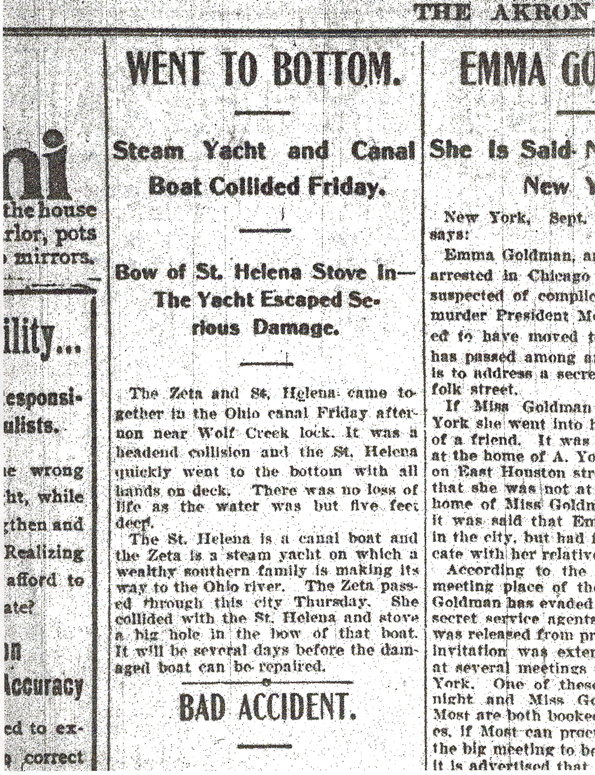 .
.
"Went to Bottom," Akron Beacon Journal, 27 September 1901.
7. His model was donated to the Stark County Historical Society where it is on display at the McKinley Museum
...further footnote and reference forth coming...
City of Canal Fulton Lease Agreement to Stark County Historical Society, 17 June 1971, CFHS records.
correspondance from John McLaughlin to Canal Fulton Heritage Society, 1972-1975, CFHS records.
Though, construction of a replica barn, shed and steam box (all of which historically sat beside the dock) would unfortunately not come to fruition.
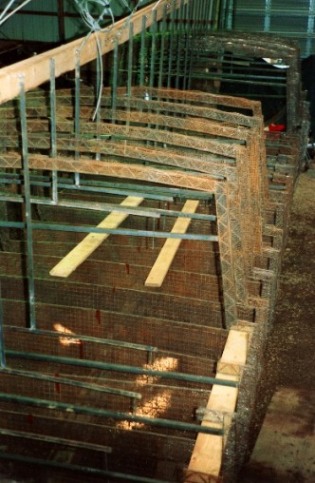
10. The boat crew humourously recounted one such 'Operation Dry Dock' in the July 1988 Newsletter.
The (Canal Fulton Heritage Society) Boat Crew, "Boat Leaks", The (Canal Fulton Heritage Society) Canawler Newsletter, July 1988, CFHS collections.
While making the dock operable once more was a necessary first step, improving its functionality, as agreed on by various advisors, was just as necessary.
Ronald D. Reid, Civil Engineer, "Engineering Survey of the Ohio and Erie Canal At Canal Fulton, Ohio," February 1981, CHFS collections.
St. Helena II Survey Report from James K. Day to Canal Fulton Heritage Society, 8 March 1984, CHFS collections.
St. Helena II Survey Report from John Scully to Canal Fulton Heritage Society, 29 November 1984, CHFS collections.
...further footnote forth coming...


